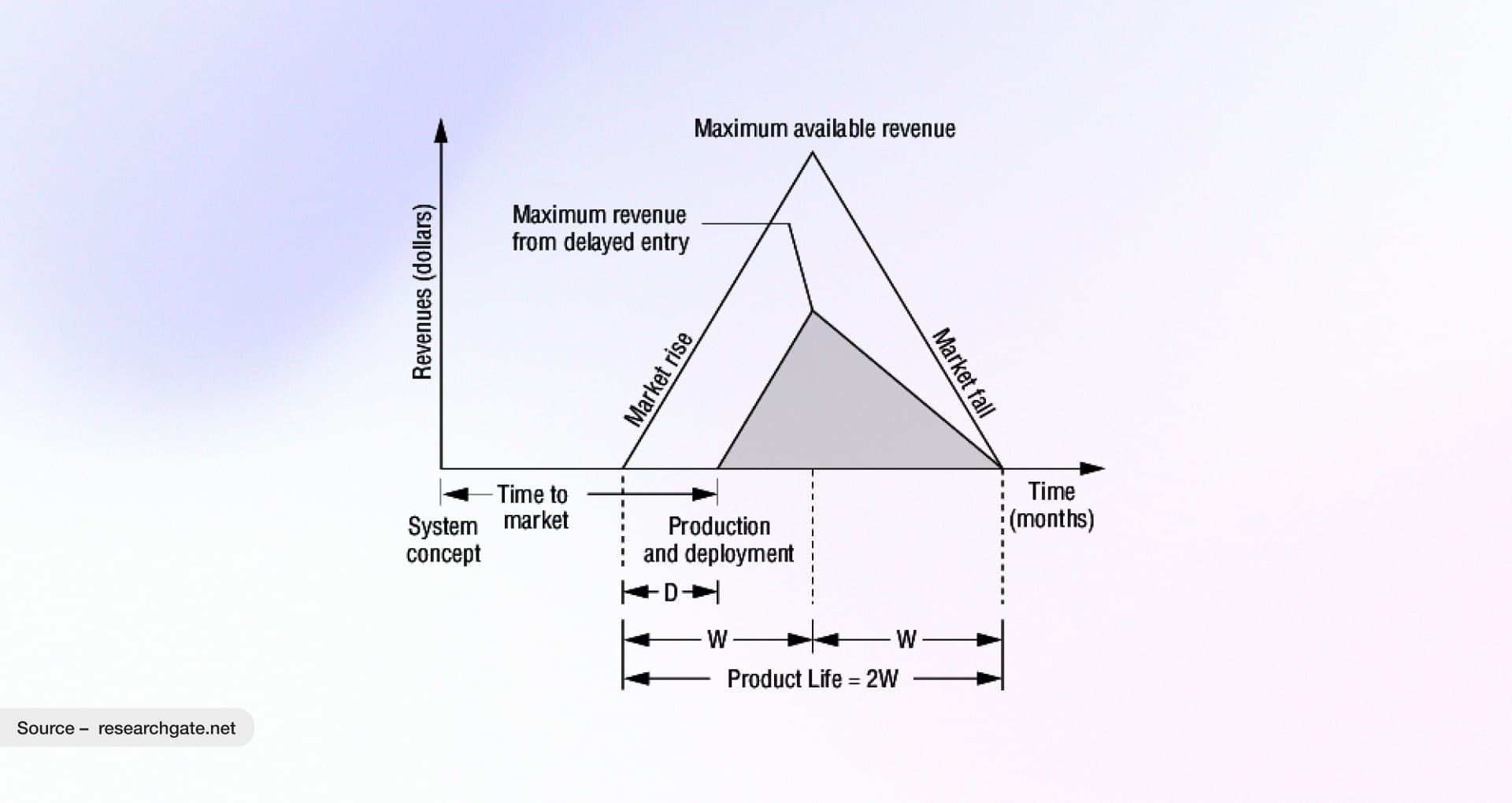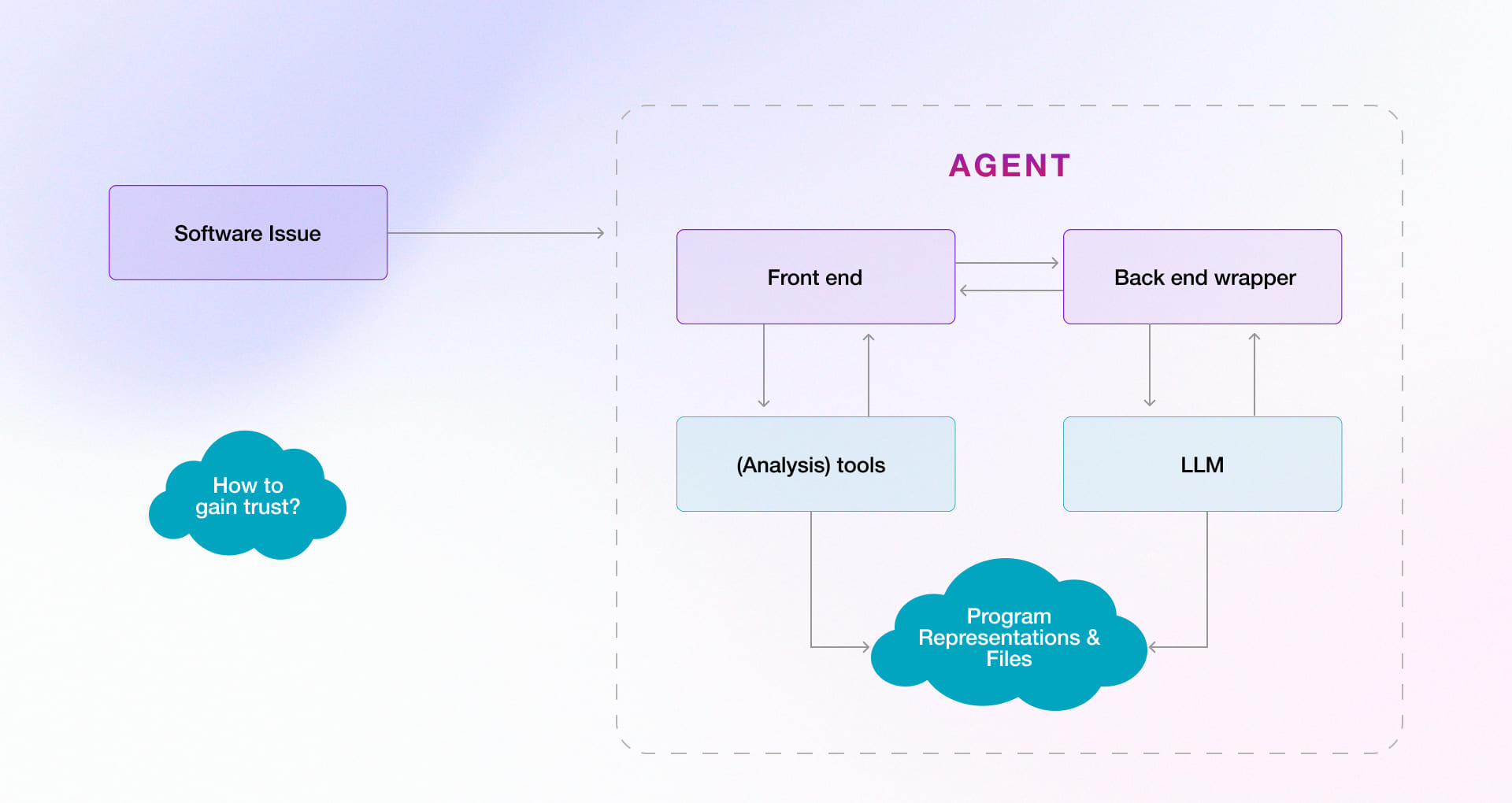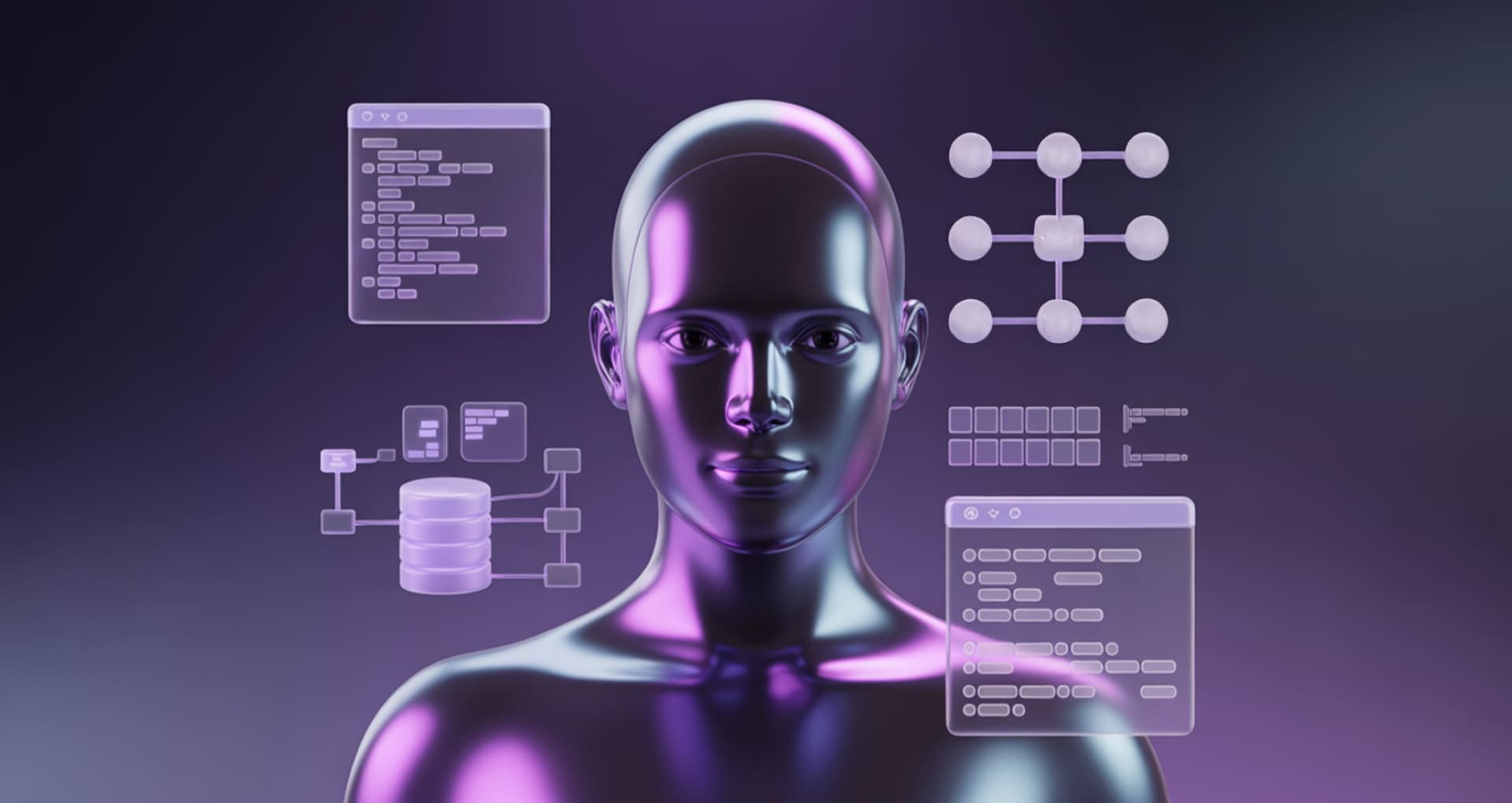Agentic Artificial Intelligence (Agentic AI) is resetting how software is engineered, from the ground up. The agentic AI market is already in a boom, and according to MarketsandMarkets, the global Agentic AI market is projected to reach USD 93.20 billion by 2032, driven by rising enterprise adoption and automation demands. By integrating independent, goal-focused agents into the software development life cycle, it gradually transforms static pipelines into adaptive, self-learning ecosystems.
Agentic AI in software development has become a superpower, enabling intelligent agents to infer intent, automate repetitive tasks, and self-validate through continuous feedback loops. Early adopters are already reporting faster release cycles, code has been more reliable than ever, and measurable ROI, marking a structural reset in how modern software teams design, build, and evolve intelligent systems.
Let’s explore in depth why Agentic AI for software development is the right choice for your next software, digital platform, or solution, offering your software a new level of excellence and your business measurable benefits, along with insights on where it can be implemented.
The ROI Equation: How Agentic AI in Software Development Translates Innovation into Business Value
Expecting double or triple ROI from traditional rule-based automation tools in software development often falls short; these approaches rarely deliver their full potential. AI-based automation in software engineering, however, is ushering in a golden era, enabling your next project to become a benchmark of innovation and value creation. From multi-agent systems to self-improving solutions, Agentic AI marks the beginning of a new game in software development.
Let’s explore the hidden ways adoption of agentic AI in modern software development directly strengthens the bottom line.
Accelerated Time-to-Market:
In today’s AI era, where speed defines market relevance, time-to-market has become a decisive ROI lever for every software initiative. Traditional delivery cycles remain bound by sequential dependencies, requirement gathering, code builds, QA, and deployment, each waiting for the previous step to complete. The result: slower release velocity, mounting opportunity costs, and delayed business impact. Here is the diagram, which helps you to understand faster launch in the market means maximum revenue.

Agentic AI reconfigures this equation through multi-agent collaboration that brings intelligence, autonomy, and adaptability into the development stage.
- Agents interpret objectives and generate initial code structures by reducing alignment delays.
- AI agents write, validate, and debug simultaneously, cutting delivery cycles.
- Agentic models manage builds, deployments, and environment setup with minimal human intervention.
- Learning agents integrate user data and propose optimizations in near real-time, accelerating iteration.
For CEOs and CTOs, this means faster releases, quicker revenue capture, and agile responsiveness to market shifts.
Enhanced Reliability and Risk Reduction:
Sequential testing, manual code reviews, and the reactive fixing of bugs in the traditional software development way can leave teams flat out juggling too many balls, resulting in a subpar product, a constant watchful eye on the horizon, and those post-release errors that can cost the business a lot.
By plugging in Agentic AI, which ties together all the different stages of software development – from code to testing to deployment to monitoring and so on – businesses can end up with some serious predictability in their quality, a whole lot less risk, and deployments that are far more resilient.
- Monitoring & Risk Management Agent: keeps an eye on performance, security, and compliance using the likes of Prometheus, Datadog, or New Relic – and actually predicts when issues are likely to pop up long before they ever hit users.
- Parallel Testing & QA Agent: runs automated functional and API tests via Selenium, Appium or Postman, quickly spotting weird behaviour and regression in real time, so you get instant feedback.
- Code Review Agent: automatically reviews your code for quality, standards, and security, even suggesting some fixes and improvements before you ever merge it into the main branch.
For the C-suite, all these mean getting software you can really trust, fewer scary post-release hiccups, and lower long-term maintenance bills – all adding up to a pretty healthy ROI boost.
Data-Driven Decision Support:
In software development, indecisiveness, dilemmas, and delays in quick action can bring your project down. Things like choosing the right technology stack, prioritizing features, or identifying potential bottlenecks often leave teams uncertain and, in too many discussions, delay the overall software development lifecycle.
For example, deciding between different cloud architectures or determining which features to launch first can delay delivery and increase costs.
Agentic AI addresses this by continuously analyzing development data and providing actionable insights. Autonomous agents, powered by LLMs, can track code quality, system performance, user feedback, and deployment metrics in real time, recommending the optimal next steps.
This ensures decisions like adjusting feature priorities, refining architecture, and improving system performance are driven by data. Businesses get faster development cycles, reduced risks, and software solutions that align more closely with both technical requirements and business goals.
The New Software Lifecycle – Where AI Agents Fit Across Development Stages
Integration of multi-agent systems within the SDLC redefines how intelligence operates across the entire delivery continuum. Let’s explore how every stage can have a specific AI agent:
1. Strategic Requirement and Intent Analysis
Agentic AI reframes requirements engineering from static documentation to dynamic intent interpretation. These systems autonomously conduct stakeholder communication analysis, detect ambiguities and contradictions in requirement statements, and generate domain-aligned user stories through continuous context comprehension.
Agentic Integration:
- Requirement interpreters use LLMs to extract structured user stories, acceptance criteria, and compliance mappings from unstructured business narratives.
- Stakeholder sentiment analyzers assess alignment gaps between verbal discussions and written artifacts.
- Persona simulators project behavioral patterns to validate functional priorities and user-centric objectives.
Analyst Take:
Enterprises adopting cognitive requirement modeling mitigate ambiguity across business–engineering translation layers and enhance delivery predictability through adaptive requirement traceability.
2. Cognitive Architecture and System Design
Architecture evolves from a static blueprint into an adaptive architectural model governed by reasoning agents. These AI agents evaluate trade-offs among performance, maintainability, and security, continuously recalibrating system design based on feedback and prior architectural knowledge.
Agentic Integration:
- Design synthesis agents auto-generate UML models, dependency graphs, and modular decomposition layouts.
- Knowledge-graph reasoning detects design redundancy, technical debt, and compliance deviations.
- Co-design connectors integrate with tools such as Enterprise Architect, ArchiMate, or Figma AI to enable parallel blueprint simulations.
Analyst Take:
By embedding AI agents in design governance, organizations achieve adaptive system evolution, balancing scalability, maintainability, and business alignment in real time.
3. Autonomous Development and Code Synthesis
Agentic AI coding frameworks advance beyond assisted programming to autonomous code orchestration. These agents interpret contextual signals from repositories, user stories, and prior commits to synthesize, refactor, and document production-grade code with minimal supervision. As a result, AI agent-based code boosted test coverage from 73% to 87%.
Agentic Integration:
- Repository-specialized models (e.g., GPT-4 Turbo, Code Llama) generate function scaffolds and perform intelligent refactoring.
- Policy-aware schema agents ensure compliance with enterprise coding standards and enforce traceability in version control.
- Self-debugging agents perform static and semantic validation pre-commit through tools like SonarQube and DeepCode.
Analyst Take:
Agentic AI transforms developers into supervisors of cognitive code ecosystems, enhancing velocity, maintaining consistency, and ensuring sustainable code quality through continuous auditing.
4. Predictive and Adaptive Testing
Agentic QA agents elevate testing from reactive validation to predictive assurance. Using reinforcement learning, they infer probable failure paths, generate dynamic test suites, and perform mutation testing aligned with evolving codebases.

Agentic Integration:
- Defect-prediction models leverage historical telemetry to anticipate high-risk modules.
- Synthetic data generators simulate rare edge cases for resilience validation.
- Adaptive test optimizers recalibrate coverage using reinforcement-learning-based test prioritization within CI/CD pipelines.
Analyst Take:
Predictive QA agents transform testing into a proactive intelligence layer—accelerating defect detection and ensuring enterprise-grade reliability with reduced human intervention.
5. Self-Optimizing Deployment
Deployment ecosystems now evolve into autonomous orchestration environments. Agentic systems interpret runtime telemetry, predict performance degradation, and self-adjust configurations across distributed infrastructures.
Agentic Integration:
- Deployment AI agents manage blue-green or canary rollouts using anomaly detection signals.
- AI-Ops scaling modules dynamically optimize compute and network resources in Kubernetes or hybrid clouds.
- Self-healing controllers remediate faults in real time through closed-loop diagnostics.
Analyst Take:
Organizations leveraging agentic deployment frameworks achieve near-zero downtime, automated rollback precision, and continuous service resilience without manual oversight.
6. Intelligent Feedback and Lifecycle Optimization
Agentic AI transforms feedback loops into self-reinforcing learning cycles. Data from user interactions, operational metrics, and production anomalies continuously refine both software and model behaviors.
Agentic Integration:
- Behavior analytics agents surface friction points through embedded observability layers.
- Data lineage and governance agents ensure full traceability for iterative model retraining.
- Lifecycle optimizers prioritize backlog features via reinforcement-learning-driven business value scoring.
Analyst Take:
Agentic AI feedback loops evolve the SDLC into a continuously learning system, where every iteration enhances alignment between business intent, system intelligence, and user outcomes.
Balance security, innovation and effectiveness in Software Engineering with Agentic AI
As an AI agent development company, we are transforming the development landscape with our expertise, capabilities, and experience. Our team of Agentic AI experts can guide you on how intelligence flows across ecosystems, enabling smarter, faster, and more adaptive operations. We systematically combine automation, reasoning, and collaboration to build Agentic AI, where multiple AI agents work together to deliver cohesive outcomes.
Our experts have developed capabilities to build multi-agent systems that interpret intent, collaborate across digital environments, and optimize decisions in real time. With proven expertise in reinforcement learning, multi-agent coordination, and cognitive workflow engineering, we deliver solutions that adapt continuously, reducing manual dependencies, strengthening reliability, and accelerating time-to-value across industries.
Frequently Asked Questions
Q: Can Agentic AI integrate with existing DevOps and CI/CD pipelines?
A: Agentic AI is capable of integration with current DevOps and CI/CD pipelines via APIs and automation system integration. It augments code generation, testing, and deployment processes.
Q: What measurable impact does Agentic AI create in enterprise software delivery?
A: It results in faster time-to-market software as development cycles are quicker, human error is minimized, and release predictability is enhanced. With all these aspects working in harmony, software quality improves.
Q: Is Agentic AI reliable enough for mission-critical applications?
A: With due validation, oversight, and human-in-the-loop monitoring for critical scenarios, mission-critical applications can be supported by Agentic AI.
Q: What are the challenges in adopting Agentic AI?
A: These are the challenges, not all of them,
- Agentic AI knowledge, skill, gap and awareness
- Integration complexity
- Security of data
- Management of change for people, and
- Acceptance of AI output.











 30 Min
30 Min


